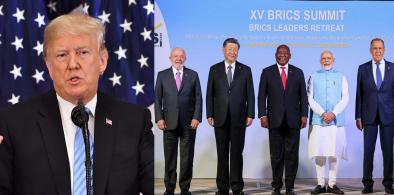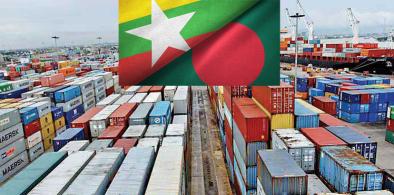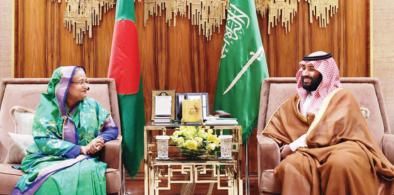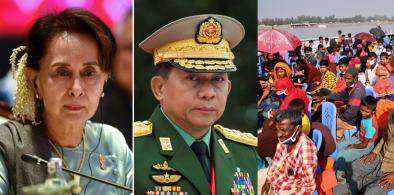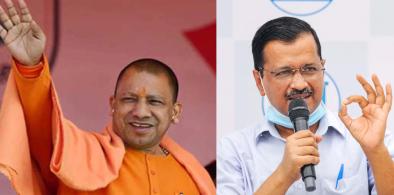With its strategic position in the Indian Ocean, India has a vital role in America’s Indo-Pacific Strategy, writes Lt Gen P. C. Katoch (retd.) for South Asia Monitor
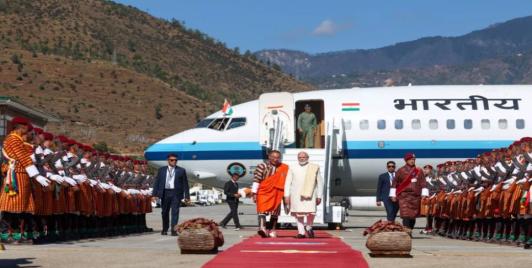
India-Bhutan Relationship Offers A Constructive Model For South Asia And A Peaceful Himalayan Region
Beyond India–Bhutan relations, the visit conveys a wider message to South Asia: cooperation grounded in respect, development, and stability remains essential in an uncertain global environment. As the region evolves, India appears to recognize the importance of maintaining strong partnerships without pressuring smaller neighbors or escalating strategic competition.
Red Fort Blast: India Facing A New Form Of Jihad?
The involvement of four doctors, one of whom allegedly executed the Red Fort blast, indicates a model that blends 'inspired' radicalisation with limited external facilitation. Interactions with certain outfits, Kashmiri terror commanders, and external handlers—if confirmed—point to an infrastructure that encourages attacks while maintaining plausible deniability.
The Nuclear Reckoning: Moment Of Awakening For India
It is time for India, along with like-minded nations across Asia, Africa, and Latin America, to articulate a shared agenda of non-alignment 2.0, not as a posture of neutrality but as a strategy of autonomy. The original Non-Aligned Movement (NAM) emerged from the Cold War’s bipolar tension; its modern counterpart must respond to multipolar volatility.
Endangered Indigenous Languages of South Asia: With Dominant Languages Replacing Mother Tongue, Are They Doomed To Die?
The world over, as is evident from the Atlas of endangered languages, there is a thrust of the dominant languages taking a precedence and most of the endangered languages are likely to disappear by 2100. Soon, possibly in the near future, the grand and great grand-children of the present generation may not be able to tell the story of their own mother tongue. Some of these languages will be lost forever and will only be limited to the pages of gazetteers and history books.
Bangladesh-Myanmar trade holds promise for the region
Enhanced ties between Bangladesh and Myanmar can contribute to the growth of trade and investment relations with ASEAN and BIMSTEC countries, writes Jubeda Chowdhury for South Asia Monitor
India’s indigenous people: Repository of India's traditional knowledge and cultural heritage
The international community needs to appreciate that against all odds and the trauma of partition, India’s culture is composite and represents her civilizational heritage, writes Amb Bhaswati Mukherjee (retd) for South Asia Monitor
Putting India-Sri Lanka relations back on track
After Basil Rajapaksa's current visit, Modi is likely to fly from New Delhi to Jaffna to mark the reopening of Palaly Airport for commercial operations, writes Sugeeswara Senadhira for South Asia Monitor
The future of Indian politics is a test for the Opposition
One of the major lessons of the assembly election results is that a fragmented opposition cannot take on the mighty electoral might of BJP-RSS, writes Dr Ram Puniyani for South Asia Monitor
Bangladesh should enhance economic engagement with Saudi Arabia
Because of Dhaka’s economic success, Saudi Arabia now perceives Bangladesh as a lucrative investment destination, writes Hussain Shazzad for South Asia Monitor
Punjab election shows good governance does gets votes in India
It is a no-brainer that Arvind Kejriwal’s victory speech was sharply focused on issues of governance, writes Jagdish Rattanani for South Asia Monitor
Only international pressure can help restore democracy in Myanmar
Tatmadaw, the Myanmarese junta, must be pressured to allow the Rohingya in Bangladesh to return to their homes with full dignity and civil rights, writes Kyaw Min for South Asia Monitor
Mystics and music: The forgotten legacy of love in South Asia
The mystical traditions of South Asia transcend apparently rigid religious boundaries, write Priyanka Singh and Beena Sarwar for South Asia Monitor
Modi's hold over India's national politics unlikely to diminish soon; Kejriwal emerges as a prospective national opposition leader
In the wake of the result in Uttar Pradesh, it is clear that 2024 is for Modi to lose since there does not appear to be any comparable singular figure who can defeat him, writes Mayank Chhaya for South Asia Monitor
India's bellwether election: A new challenger to BJP’s continued dominance?
It is now almost a certainty that the AAP will replace the Congress as the BJP’s main challenger in Gujarat later this year, marking its emergence as a major alternative to the BJP at the national level, writes Amulya Ganguli for South Asia Monitor
The Russia-Ukraine war is unlikely to diminish Afghanistan's importance
The US and its allies will never lose sight of Afghanistan's strategic importance in a vital region, writes Saed Mansoor Sadat for South Asia Monitor
Crime and punishment: Is the Indian justice system impartial?
Criminal justice has its own logic at present and its discrepancies are not matching with the democratic ethos of India's secular constitution, writes Ram Puniyani for South Asia Monitor
Pakistan’s 'Aurat March': Breaking biases against women
Aurat March in Pakistan has proved to be a phenomenal success, forcing society to acknowledge women’s efforts, writes Nadra Huma Quraishi for South Asia Monitor
Danger of rapid escalation of Ukraine war: India must speak out
The ‘unforeseen’ would become a frightening reality, recalling what the victims of Hiroshima and Nagasaki had whispered piteously: "The living will envy the dead", writes Cmde C. Uday Bhaskar (retd) for South Asia Monitor




